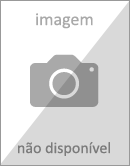Doppler Radar Physiological Sensing
 -15%
portes grátis
-15%
portes grátis
Doppler Radar Physiological Sensing
Boric-Lubecke, Olga; Park, Byung-Kwon; Singh, Aditya; Lubecke, Victor M.; Droitcour, Amy D.
John Wiley & Sons Inc
01/2018
304
Dura
Inglês
9781118024027
15 a 20 dias
550
1 Introduction 1
Amy D. Droitcour, Olga Boric-Lubecke, Shuhei Yamada, and Victor M. Lubecke
1.1 Current Methods of Physiological Monitoring, 2
1.2 Need for Noncontact Physiological Monitoring, 3
1.2.1 Patients with Compromised Skin, 3
1.2.2 Sleep Monitoring, 4
1.2.3 Elderly Monitoring, 5
1.3 Doppler Radar Potential for Physiological Monitoring, 5
1.3.1 Principle of Operation and Power Budget, 6
1.3.2 History of Doppler Radar in Physiological Monitoring, 8
References, 16
2 Radar Principles 21
Ehsan Yavari, Olga Boric-Lubecke, and Shuhei Yamada
2.1 Brief History of Radar, 21
2.2 Radar Principle of Operation, 22
2.2.1 Electromagnetic Wave Propagation and Reflection, 23
2.2.2 Radar Cross Section, 24
2.2.3 Radar Equation, 25
2.3 Doppler Radar, 28
2.3.1 Doppler Effect, 28
2.3.2 Doppler Radar Waveforms: CW, FMCW, Pulsed, 29
2.4 Monostatic and Bistatic Radar, 32
2.5 Radar Applications, 35
References, 36
3 Physiological Motion and Measurement 39
Amy D. Droitcour and Olga Boric-Lubecke
3.1 Respiratory System Motion, 39
3.1.1 Introduction to the Respiratory System, 39
3.1.2 Respiratory Motion, 40
3.1.3 Chest Wall Motion Associated with Breathing, 43
3.1.4 Breathing Patterns in Disease and Disorder, 43
3.2 Heart System Motion, 44
3.2.1 Location and Gross Anatomy of the Heart, 45
3.2.2 Electrical and Mechanical Events of the Heart, 46
3.2.3 Chest Surface Motion Due to Heart Function, 48
3.2.4 Quantitative Measurement of Chest Wall Motion Due to Heartbeat, 50
3.3 Circulatory System Motion, 53
3.3.1 Location and Structure of the Major Arteries and Veins, 54
3.3.2 Blood Flow Through Arteries and Veins, 55
3.3.3 Surface Motion from Blood Flow, 56
3.3.4 Circulatory System Motion: Variation with Age, 57
3.4 Interaction of Respiratory, Heart, and Circulatory Motion at the Skin Surface, 58
3.5 Measurement of Heart and Respiratory Surface Motion, 58
3.5.1 Radar Measurement of Physiological Motion, 59
3.5.2 Surface Motion Measurement of Respiration Rate, 59
3.5.3 Surface Motion Measurement of Heart/Pulse Rate, 61
References, 63
4 Physiological Doppler Radar Overview 69
Aditya Singh, Byung-Kwon Park, Olga Boric-Lubecke, Isar Mostafanezhad, and Victor M. Lubecke
4.1 RF Front End, 70
4.1.1 Quadrature Receiver, 73
4.1.2 Phase Coherence and Range Correlation, 77
4.1.3 Frequency Choice, 79
4.1.4 Antenna Considerations, 80
4.1.5 Power Budget, 80
4.2 Baseband Module, 83
4.2.1 Analog Signal Conditioning and Coupling Methods, 83
4.2.2 Data Acquisition, 85
4.3 Signal Processing, 86
4.3.1 Phase Demodulation, 86
4.3.2 Demodulated Phase Processing, 87
4.4 Noise Sources, 90
4.4.1 Electrical Noise, 90
4.4.2 Mechanical Noise, 92
4.5 Conclusions, 92
References, 93
5 CW Homodyne Transceiver Challenges 95
Aditya Singh, Alex Vergara, Amy D. Droitcour, Byung-Kwon Park, Olga Boric-Lubecke, Shuhei Yamada, and Victor M. Lubecke
5.1 RF Front End, 95
5.1.1 Single-Channel Limitations, 96
5.1.2 LO Leakage Cancellation, 103
5.1.3 IQ Imbalance Assessment, 109
5.2 Baseband Module, 113
5.2.1 AC and DC Coupling, 113
5.2.2 DC Canceller, 114
5.3 Signal Demodulation, 118
5.3.1 DC Offset and DC Information, 118
5.3.2 Center Tracking, 125
5.3.3 DC Cancellation Results, 130
References, 134
6 Sources of Noise and Signal-to-Noise Ratio 137
Amy D. Droitcour, Olga Boric-Lubecke, and Shuhei Yamada
6.1 Signal Power, Radar Equation, and Radar Cross Section, 138
6.1.1 Radar Equation, 138
6.1.2 Radar Cross Section, 140
6.1.3 Reflection and Absorption, 141
6.1.4 Phase-to-Amplitude Conversion, 141
6.2 Oscillator Phase Noise, Range Correlation and Residual Phase Noise, 143
6.2.1 Oscillator Phase Noise, 143
6.2.2 Range Correlation and Residual Phase Noise, 147
6.3 Contributions of Various Noise Sources, 151
6.3.1 Phase Noise, 151
6.3.2 Baseband 1/f Noise, 154
6.3.3 RF Additive White Gaussian Noise, 154
6.4 Signal-to-Noise Ratio, 155
6.5 Validation of Range Correlation, 157
6.6 Human Testing Validation, 158
References, 168
7 Doppler Radar Physiological Assessments 171
John Kiriazi, Olga Boric-Lubecke, Shuhei Yamada, Victor M. Lubecke, and Wansuree Massagram
7.1 Actigraphy, 172
7.2 Respiratory Rate, 176
7.3 Tidal Volume, 179
7.4 Heart Rates, 184
7.5 Heart Rate Variability, 185
7.6 Respiratory Sinus Arrhythmia, 190
7.7 RCs and Subject Orientation, 196
References, 204
8 Advanced Performance Architectures 207
Aditya Singh, Aly Fathy, Isar Mostafanezhad, Jenshan Lin, Olga Boric-Lubecke, Shuhei Yamada, Victor M. Lubecke, and Yazhou Wang
8.1 DC Offset and Spectrum Folding, 208
8.1.1 Single-Channel Homodyne System with Phase Tuning, 208
8.1.2 Heterodyne System with Frequency Tuning, 213
8.1.3 Low-IF Architecture, 220
8.2 Motion Interference Suppression, 224
8.2.1 Interference Cancellation, 226
8.2.2 Bistatic Radar: Sensor Nodes, 231
8.2.3 Passive RF Tags, 240
8.3 Range Detection, 250
8.3.1 Physiological Monitoring with FMCW Radar, 250
8.3.2 Physiological Monitoring with UWB Radar, 251
References, 266
9 Applications and Future Research 269
Aditya Singh and Victor M. Lubecke
9.1 Commercial Development, 269
9.1.1 Healthcare, 269
9.1.2 Defense, 272
9.2 Recent Research Areas, 272
9.2.1 Sleep Study, 272
9.2.2 Range, 275
9.2.3 Multiple Subject Detection, 276
9.2.4 Animal Monitoring, 279
9.3 Conclusion, 282
References, 282
Index 285
1 Introduction 1
Amy D. Droitcour, Olga Boric-Lubecke, Shuhei Yamada, and Victor M. Lubecke
1.1 Current Methods of Physiological Monitoring, 2
1.2 Need for Noncontact Physiological Monitoring, 3
1.2.1 Patients with Compromised Skin, 3
1.2.2 Sleep Monitoring, 4
1.2.3 Elderly Monitoring, 5
1.3 Doppler Radar Potential for Physiological Monitoring, 5
1.3.1 Principle of Operation and Power Budget, 6
1.3.2 History of Doppler Radar in Physiological Monitoring, 8
References, 16
2 Radar Principles 21
Ehsan Yavari, Olga Boric-Lubecke, and Shuhei Yamada
2.1 Brief History of Radar, 21
2.2 Radar Principle of Operation, 22
2.2.1 Electromagnetic Wave Propagation and Reflection, 23
2.2.2 Radar Cross Section, 24
2.2.3 Radar Equation, 25
2.3 Doppler Radar, 28
2.3.1 Doppler Effect, 28
2.3.2 Doppler Radar Waveforms: CW, FMCW, Pulsed, 29
2.4 Monostatic and Bistatic Radar, 32
2.5 Radar Applications, 35
References, 36
3 Physiological Motion and Measurement 39
Amy D. Droitcour and Olga Boric-Lubecke
3.1 Respiratory System Motion, 39
3.1.1 Introduction to the Respiratory System, 39
3.1.2 Respiratory Motion, 40
3.1.3 Chest Wall Motion Associated with Breathing, 43
3.1.4 Breathing Patterns in Disease and Disorder, 43
3.2 Heart System Motion, 44
3.2.1 Location and Gross Anatomy of the Heart, 45
3.2.2 Electrical and Mechanical Events of the Heart, 46
3.2.3 Chest Surface Motion Due to Heart Function, 48
3.2.4 Quantitative Measurement of Chest Wall Motion Due to Heartbeat, 50
3.3 Circulatory System Motion, 53
3.3.1 Location and Structure of the Major Arteries and Veins, 54
3.3.2 Blood Flow Through Arteries and Veins, 55
3.3.3 Surface Motion from Blood Flow, 56
3.3.4 Circulatory System Motion: Variation with Age, 57
3.4 Interaction of Respiratory, Heart, and Circulatory Motion at the Skin Surface, 58
3.5 Measurement of Heart and Respiratory Surface Motion, 58
3.5.1 Radar Measurement of Physiological Motion, 59
3.5.2 Surface Motion Measurement of Respiration Rate, 59
3.5.3 Surface Motion Measurement of Heart/Pulse Rate, 61
References, 63
4 Physiological Doppler Radar Overview 69
Aditya Singh, Byung-Kwon Park, Olga Boric-Lubecke, Isar Mostafanezhad, and Victor M. Lubecke
4.1 RF Front End, 70
4.1.1 Quadrature Receiver, 73
4.1.2 Phase Coherence and Range Correlation, 77
4.1.3 Frequency Choice, 79
4.1.4 Antenna Considerations, 80
4.1.5 Power Budget, 80
4.2 Baseband Module, 83
4.2.1 Analog Signal Conditioning and Coupling Methods, 83
4.2.2 Data Acquisition, 85
4.3 Signal Processing, 86
4.3.1 Phase Demodulation, 86
4.3.2 Demodulated Phase Processing, 87
4.4 Noise Sources, 90
4.4.1 Electrical Noise, 90
4.4.2 Mechanical Noise, 92
4.5 Conclusions, 92
References, 93
5 CW Homodyne Transceiver Challenges 95
Aditya Singh, Alex Vergara, Amy D. Droitcour, Byung-Kwon Park, Olga Boric-Lubecke, Shuhei Yamada, and Victor M. Lubecke
5.1 RF Front End, 95
5.1.1 Single-Channel Limitations, 96
5.1.2 LO Leakage Cancellation, 103
5.1.3 IQ Imbalance Assessment, 109
5.2 Baseband Module, 113
5.2.1 AC and DC Coupling, 113
5.2.2 DC Canceller, 114
5.3 Signal Demodulation, 118
5.3.1 DC Offset and DC Information, 118
5.3.2 Center Tracking, 125
5.3.3 DC Cancellation Results, 130
References, 134
6 Sources of Noise and Signal-to-Noise Ratio 137
Amy D. Droitcour, Olga Boric-Lubecke, and Shuhei Yamada
6.1 Signal Power, Radar Equation, and Radar Cross Section, 138
6.1.1 Radar Equation, 138
6.1.2 Radar Cross Section, 140
6.1.3 Reflection and Absorption, 141
6.1.4 Phase-to-Amplitude Conversion, 141
6.2 Oscillator Phase Noise, Range Correlation and Residual Phase Noise, 143
6.2.1 Oscillator Phase Noise, 143
6.2.2 Range Correlation and Residual Phase Noise, 147
6.3 Contributions of Various Noise Sources, 151
6.3.1 Phase Noise, 151
6.3.2 Baseband 1/f Noise, 154
6.3.3 RF Additive White Gaussian Noise, 154
6.4 Signal-to-Noise Ratio, 155
6.5 Validation of Range Correlation, 157
6.6 Human Testing Validation, 158
References, 168
7 Doppler Radar Physiological Assessments 171
John Kiriazi, Olga Boric-Lubecke, Shuhei Yamada, Victor M. Lubecke, and Wansuree Massagram
7.1 Actigraphy, 172
7.2 Respiratory Rate, 176
7.3 Tidal Volume, 179
7.4 Heart Rates, 184
7.5 Heart Rate Variability, 185
7.6 Respiratory Sinus Arrhythmia, 190
7.7 RCs and Subject Orientation, 196
References, 204
8 Advanced Performance Architectures 207
Aditya Singh, Aly Fathy, Isar Mostafanezhad, Jenshan Lin, Olga Boric-Lubecke, Shuhei Yamada, Victor M. Lubecke, and Yazhou Wang
8.1 DC Offset and Spectrum Folding, 208
8.1.1 Single-Channel Homodyne System with Phase Tuning, 208
8.1.2 Heterodyne System with Frequency Tuning, 213
8.1.3 Low-IF Architecture, 220
8.2 Motion Interference Suppression, 224
8.2.1 Interference Cancellation, 226
8.2.2 Bistatic Radar: Sensor Nodes, 231
8.2.3 Passive RF Tags, 240
8.3 Range Detection, 250
8.3.1 Physiological Monitoring with FMCW Radar, 250
8.3.2 Physiological Monitoring with UWB Radar, 251
References, 266
9 Applications and Future Research 269
Aditya Singh and Victor M. Lubecke
9.1 Commercial Development, 269
9.1.1 Healthcare, 269
9.1.2 Defense, 272
9.2 Recent Research Areas, 272
9.2.1 Sleep Study, 272
9.2.2 Range, 275
9.2.3 Multiple Subject Detection, 276
9.2.4 Animal Monitoring, 279
9.3 Conclusion, 282
References, 282
Index 285


